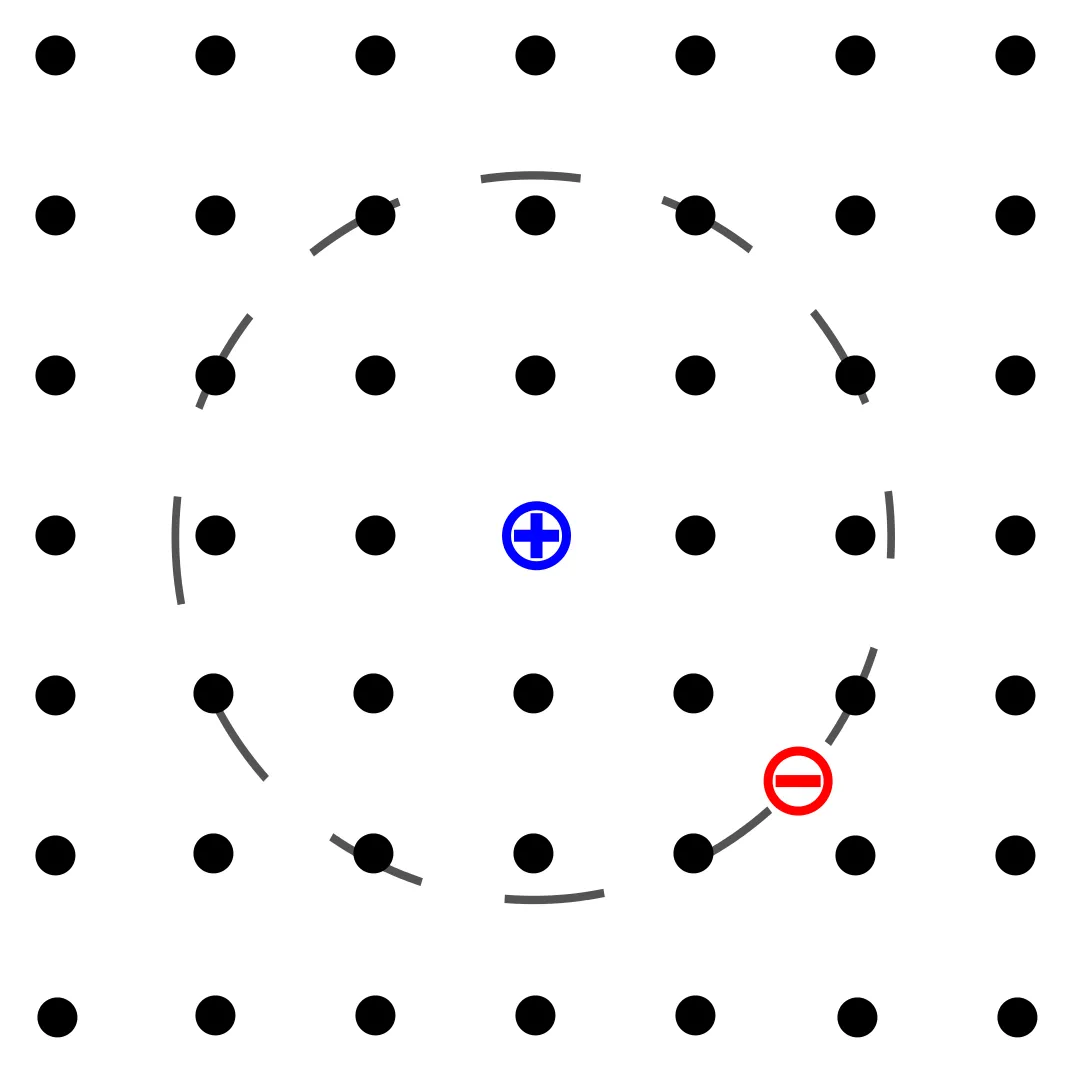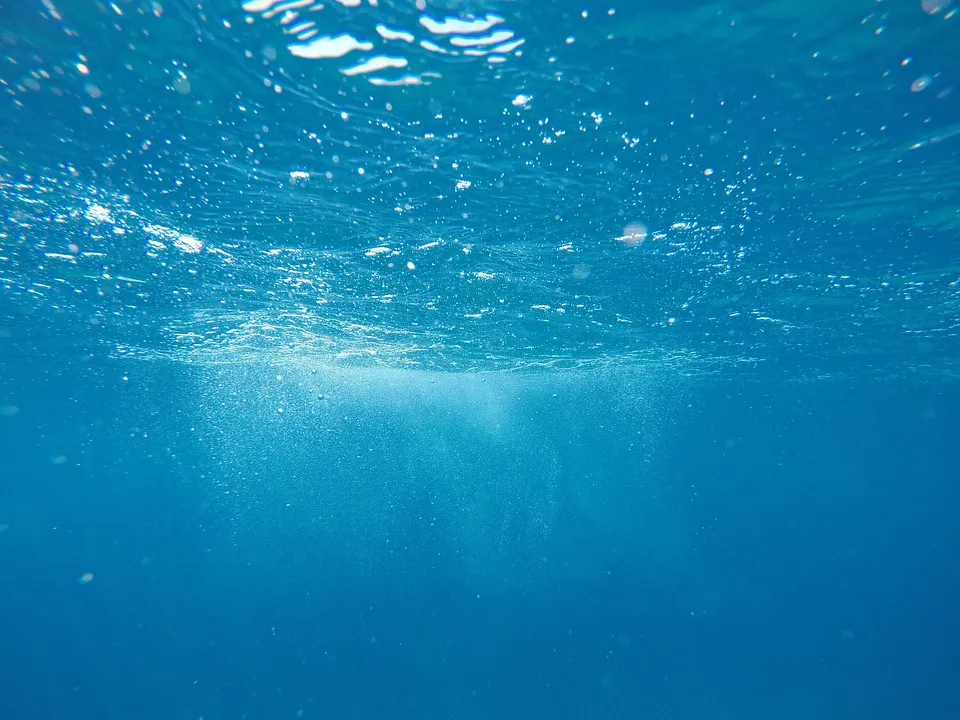A new quasiparticle
By studying the interactions within light, gallium nitride and germanium semiconductor layers, a group of researchers found traces of a new quasiparticle. This recent discovery could have an impact on the development of new electronic devices.

Imagine CC0 Creative Commons - Source
A quasiparticle is not a real particle, but is formed when two different particles interact with each other and behave as if they were one. For example, an electron and its’ whole (an empty space positively charged) can interact and form a quasiparticle called “exciton”. The “excitons” do not interact significantly with the other electrons present in the material. The researchers’ doped gallium nitride with germanium impurities, thereby finding that the light emitted by the semiconductors had frequencies different than those expected. To explain this phenomenon, the scientists then hypothesized that the existence of a new type of electron-hole, quasiparticle, that interacts with the surrounding electrons.
Unpolluted seas
A group of researchers’ produced the first map that shows an accurate portion of the oceans and seas in which human activities have had a negligible impact.

Imagine CC0 Creative Commons - Source
13%. This is the percentage of seas and oceans where the human impact is negligible. To achieve this result, the researchers’ examined the stress factor that humans have exerted on the environment. In particular the aspects that have been taken into consideration., pollution, fishing and commercial transport. These areas in question are located in remote areas of the Earth, such as in the middle of the Pacific Ocean or near the poles. These are examples of ecosystems that need to be protected, because they are rich in biodiversity.
The castes of ants
From an ethological point of view, the caste system of the ants is now well known, although everything is still very confusing when considered from a molecular and physiological point of view. However, recent research has taken big steps forward.

Imagine CC0 Creative Commons - Source
Apparently, the social behavior of ants, is one that reflects their belonging to a specific caste, that is influenced by a gene that produces a hormone similar to that of human insulin. This link probably implies the presence of regulatory mechanisms based on the amount of food available; in fact, it has been observed that this gene is expressed precisely in the queens, which are naturally more "nourished" by the workers.
Post of the day

Imagine CC0 Creative Commons - Source
The WHO has recently decided to treat natural aging as a disease; for some, this is a ethical problem, because trying to cure a natural process like this might seem similar to aggressive treatments; but old age is an important risk factor contributing to many diseases, and often drastically reduces people's quality of life... Treating it as a disease could help to limit its discomfort.

Immagine CC0 Creative Commons, si ringrazia @mrazura per il logo ITASTEM.
CLICK HERE AND VOTE FOR DAVINCI.WITNESS
Keep in mind that for organizational reasons it’s necessary to use “steemstem” and “davinci-times” tags to be voted.
@zest - @spaghettiscience - @rscalabrini
Una nuova quasiparticella
Studiando le interazioni della luce con strati semiconduttori di nitruro di gallio e germanio, un gruppo di ricercatori ha trovato tracce di una nuova quasiparticella. Questa scoperta potrebbe avere un impatto per lo sviluppo di nuovi dispositivi elettronici.

Imagine CC0 Creative Commons - Source
Una quasiparticella non è una particella vera e propria, ma si forma quando due diverse particelle interagiscono tra loro e si comportano come se fossero una sola. Ad esempio, un elettrone e la sua lacuna (uno spazio vuoto liberato dall’elettrone stesso e carico positivamente), possono interagire e formare una quasiparticella chiamata eccitone. Gli eccitoni non interagiscono significativamente con gli altri elettroni presenti nel materiale. I ricercatori hanno drogato il nitruro di gallio con impurità di germanio, scoprendo che la luce emessa aveva frequenze diverse da quelle attese. Per dare spiegazione del fenomeno, gli scienziati hanno quindi ipotizzato l’esistenza di un nuovo tipo di quasiparticella elettrone-lacuna che interagisce con gli elettroni circostanti.
I mari non contaminati
Un gruppo di ricercatori ha prodotto la prima mappa che mostra con esattezza la porzione di oceani e mari in cui le attività umane hanno avuto un impatto trascurabile.

Imagine CC0 Creative Commons - Source
Appena il 13%. È questa la percentuale di mari ed oceani in cui l’impatto umano ancora non si è fatto sentire. Per raggiungere questo risultato i ricercatori hanno esaminato i fattori di stress che l’uomo esercita sull’ambiente. In particolare sono stati presi in considerazione inquinamento, pesca e trasporti commerciali. Le zone in questione si trovano in aree remote della Terra, in mezzo all’Oceano Pacifico o vicino ai poli. Sono ecosistemi da tutelare, perché ricchi di biodiversità.
Le caste delle formiche
Se da un punto di vista etologico, il sistema di casta delle formiche è ormai ben noto, tutto è ancora molto confuso se considerato da un punto di vista molecolare e fisiologico. Una recente ricerca, però, sembra aver fatto grandi passi in avanti.

Imagine CC0 Creative Commons - Source
A quanto pare, il comportamento sociale delle formiche, e quindi quello che ne rispecchia l’appartenenza ad una specifica casta è influenzato da un gene che produce un ormone simile a quello dell’insulina umana. Questo collegamento implica probabilmente la presenza di meccanismi regolatori basati sulla quantità di cibo disponibile; è stato infatti osservato che il gene è molto espresso proprio nelle regine, che sono naturalmente più “nutrite” delle operaie.
Post del giorno

Imagine CC0 Creative Commons - Source
L’OMS ha recentemente deciso di trattare il naturale invecchiamento come una malattia; questo rappresenta per alcuni una sorta di problema etico, in quanto cercare di curare una processo del genere potrebbe apparire simile all’accanimento terapeutico; eppure, la vecchiaia è un importante fattore di rischio per molte malattie, e spesso riduce drasticamente la qualità della vita delle persone… Trattarla come una malattia potrebbe contribuire a limitarne i disagi.

Immagine CC0 Creative Commons, si ringrazia @mrazura per il logo ITASTEM.
CLICK HERE AND VOTE FOR DAVINCI.WITNESS
Si ricorda che per motivi organizzativi è necessario utilizzare le tag “steemstem” e “davinci-times” per essere votati.
@zest - @spaghettiscience - @rscalabrini